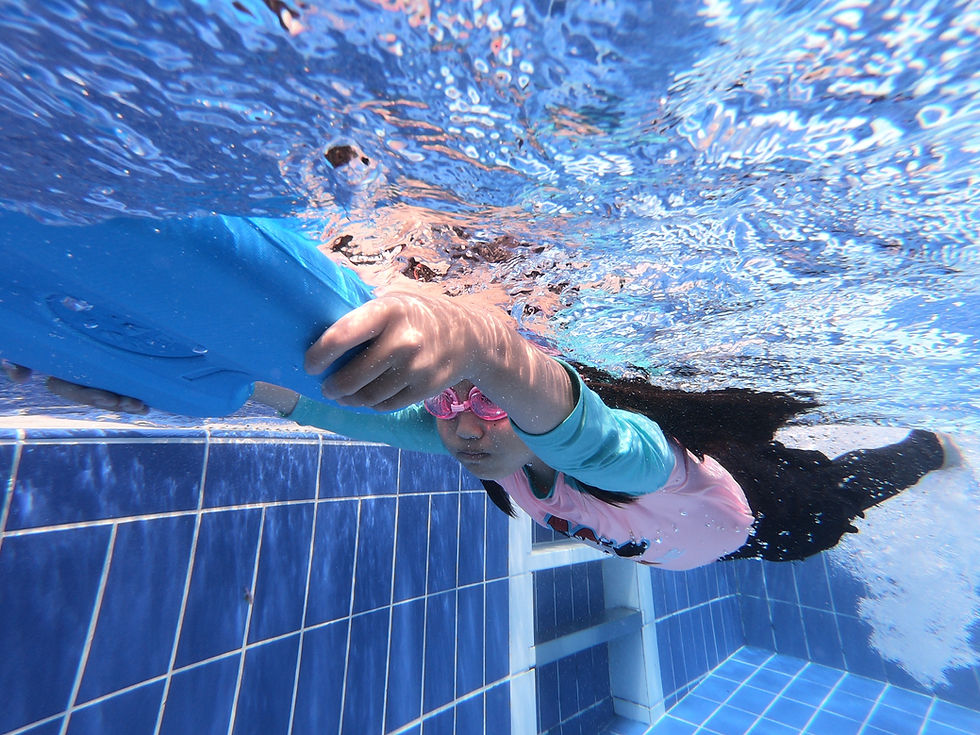Developing a Structured Approach to Freestyle Training
- SG Sink Or Swim

- Jun 6
- 3 min read

Freestyle, or front crawl, is the fastest and most efficient stroke in competitive swimming — but raw speed alone isn’t enough. To swim freestyle effectively and consistently, athletes need a structured training approach that builds endurance, refines technique, and strengthens key muscle groups. Without a plan, swimmers risk overtraining, hitting plateaus, or reinforcing bad habits.
This guide walks you through how to build a well-rounded, goal-oriented freestyle training structure that supports measurable progress — whether you’re a beginner or seasoned competitor.
🧠 Why Structure Matters in Freestyle Training
Freestyle training should be more than just swimming laps. A structured approach helps swimmers:
Improve technique and reduce drag
Increase aerobic and anaerobic capacity
Build speed, efficiency, and endurance
Identify and overcome weaknesses
Track progress over time
A balanced training plan includes specific sessions for technique, distance, speed, strength, and recovery.
🏗️ Key Components of a Structured Freestyle Plan
1. Technical Focus
Frequency: 2–3x/week
Goal: Reinforce stroke mechanics through drills and feedback
Examples:
Fingertip drag (high elbow recovery)
Catch-up drill (stroke timing)
3-3-3 drill (body rotation)
✅ Include short drill sets at the start of workouts when the swimmer is freshest.
2. Aerobic Endurance
Frequency: 2–3x/week
Goal: Build stamina for longer swims or base pace sets
Examples:
3×400 @ moderate effort with short rest
5×200 descending pace
20-minute continuous swim (with stroke count tracking)
✅ Focus on long, relaxed strokes with even pacing.
3. Anaerobic Threshold & Speed
Frequency: 1–2x/week
Goal: Improve speed, sprinting ability, and lactate tolerance
Examples:
10×50 all-out @ 1:00
4×100 negative split
8×25 sprint from push with full recovery
✅ Keep intervals short and effort high; allow full rest between sprints.
4. Kick and Pull Sets
Frequency: 1–2x/week (integrated into warm-up or main set)
Goal: Strengthen specific muscle groups and improve body position
Examples:
6×50 flutter kick with board
4×100 pull with buoy and paddles
Vertical kicking sets (with fins for advanced swimmers)
✅ Mix equipment and intensities for variety.
5. Starts, Turns, and Finishes
Frequency: 1x/week (or as part of race-prep phase)
Goal: Reduce transition time and build explosive power
Examples:
Dive-and-glide to 15m with breakout
4×25 sprint with flip turn focus
Relay exchange practice
✅ Emphasize streamline and breakout timing.
6. Dryland Training
Frequency: 2–3x/week
Goal: Improve strength, mobility, and injury prevention
Exercises:
Core: planks, V-ups, Russian twists
Upper body: pull-ups, resistance band pulls
Legs: squats, lunges, explosive jumps
✅ Dryland sessions should complement water-based goals (not exhaust the swimmer).
📅 Weekly Example Plan (Intermediate Swimmer)
Day | Focus | Sample Set Highlights |
Monday | Technique + Kick | 4×100 drills + 6×50 kick |
Tuesday | Aerobic Endurance | 3×400 swim @ moderate pace |
Wednesday | Dryland + Recovery Swim | Bodyweight circuit + 1000 easy with breathing focus |
Thursday | Speed + Pull Focus | 10×50 sprints + 4×100 pull with paddles |
Friday | Threshold Pace | 6×200 descending + flip turn work |
Saturday | Long Swim or Open Water | 1×1500 continuous or broken swim |
Sunday | Rest or Yoga | Light mobility work or full day off |
📊 Track Your Progress
Structured training works best when paired with data:
Log swim times, splits, stroke count, and perceived effort
Film your technique every few weeks for visual feedback
Monitor heart rate and RPE (Rate of Perceived Exertion)
✅ Celebrate small gains — even a 0.5-second improvement over 100m is big progress.
🏁 Final Thoughts
Freestyle success isn’t just about talent — it’s about deliberate practice, smart planning, and consistency. A structured training approach helps swimmers build a complete skill set, avoid burnout, and hit peak performance when it counts.
Whether you're prepping for a race or refining your stroke, the right plan can make the difference between plateau and progress.





Comments